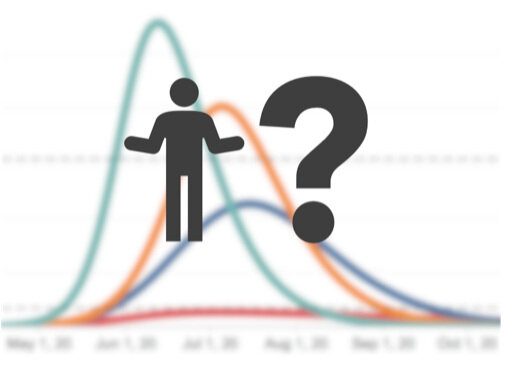Local Expert-Driven COVID-19 Models for Hawaii Are Long Overdue
by Nick Redding, Hawaii Data Collaborative
We learned the hard way that modeling COVID-19 forecasts is not one-size-fits-all. Recently, we wrote about the advantages of the University of Washington IHME model for understanding peak hospital demand in Hawaii, only to shortly thereafter advise caution in interpreting the model because the projected hospital capacity peak had suddenly shifted by three weeks. A closer inspection of the model revealed problematic assumptions, and underscored a real vulnerability for Hawaii in not having a valid local model.
Why is modeling COVID-19 in Hawaii so difficult?
First, inherent challenges exist in modeling COVID-19, given the uncertainty around factors such as incubation time, the percentage of those infected who are asymptomatic, and how long an infected person remains contagious. Second, the effectiveness of social distancing measures and travel restrictions is difficult to quantify, making the number of people expected to be infected by an infectious person (the infamous R0 value) difficult to quantify as well.
Lastly, with all of this uncertainty, clean, timely data from contact tracing, clinical tests, hospitalizations and deaths – including geographic, demographic and relevant case details – is absolutely critical. Such detailed data would allow local researchers and modelers to continually refine projections, resulting in greater precision and utility for response planning and decision making. Models calibrated with robust local data by local experts will yield the most reliable projections for local-level decision making.
What’s holding back a localized COVID-19 model for Hawaii?
Developing effective local models will provide insights on COVID-19 impacts in Hawaii as well as guidance for prudent responses to those impacts. Building this capacity will require:
Access to local data. General COVID-19 models, such as the IHME model, tend to rely on nationally aggregated data and dated statistics on Hawaii’s hospital and ICU bed capacities and available ventilators. Laying the groundwork for responsive, locally-led modeling requires greater transparency and access to consistent, real-time data on testing and hospital capacities.
Support for local modelers and experts. Instead of continuously adapting mainland models with Hawaii data, we must empower and support local experts to develop models that are responsive to local conditions and local needs. Once a foundation of valid and consistent data sources is established and made available for broader use, we will be able to more accurately model short-term infection rates and long-term impacts on our economy and community.
Effective communication. Local datasets and models must be communicated consistently to decision makers as well as to the general public. Currently, disparate datasets and poorly-adapted mainland COVID-19 models risk sowing confusion as projection curves shift. We need the general public, experts, and decision makers all on the same page—working from the same valid, consistent, and up-to-date datasets delivered by a single, reliable source.
Modeling the new normal that is COVID-19
Recently, we have seen a marked decrease in reported COVID-19 cases day-over-day, with new hospitalizations and deaths seemingly at a plateau. While this pattern might suggest we have hit our peak, it does not warrant complacency. COVID-19 will be with us for months, and avoiding a strain on hospitals will require balancing policies around social contact and travel with economic and health considerations. Decision makers – not just public officials, but those in the private and non-profit sectors as well – will only be able to successfully navigate this balance with effective local models, driven by the best possible data.

